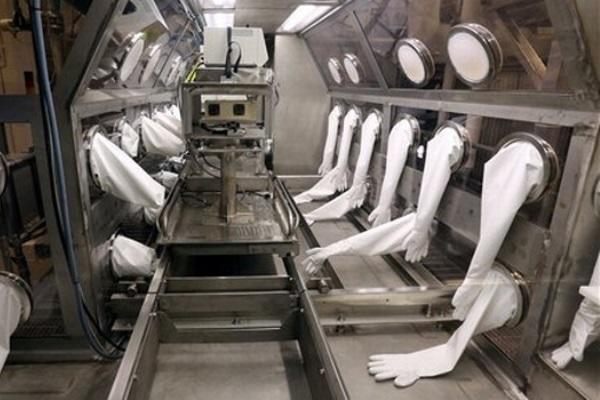The military shipped supposedly inert anthrax samples that may have been live over the last 10 years to at least 51 labs in 17 states, the District of Columbia, Canada, South Korea and Australia, the Pentagon admitted Wednesday in giving the latest count in the growing scandal.
"We expect that number may rise" as the military reviews its handling of deadly toxins, Deputy Defense Secretary Robert Work said at a testy Pentagon briefing at which various officials gave vague answers to questions on the scope of the problem.
Frank Kendall, the undersecretary for acquisition named by Work to conduct DoD's review, said it was not known yet how many anthrax samples were shipped, how many were live, the number of labs to which they went, or whether those labs subsequently undertook activities which turned inert samples live.
"We are still in the discovery stage of this activity," Kendall said. "You have to understand the numbers are in flux."
Work said that even the live anthrax samples that were shipped were at a level that was normally "too low to infect a healthy person."
He stressed that there were "no suspected or confirmed cases" of anthrax poisoning thus far from any of the shipments and "we know of no risk to the general public."
31 People Receiving Antibiotics
However, a total of at least 31 military and civilian personnel were being treated with the antibiotic CIPRO as a precaution, although that number also may rise, officials said. Twenty-two of those being treated were at the Osan Air Force Base in South Korea - 10 soldiers, five airmen and seven civilian personnel. The other nine were at labs in the U.S.
"There is some degree of concern for our lab workers" possibly becoming infected although the risk was low, said Navy Cmdr. Franca Jones, director of Medical Programs for DoD Chemical and Biological Defense.
The overall purpose of shipping both live and supposedly inert anthrax samples to civilian labs in the U.S. and overseas was for training in detection and to develop better field tests for detection, Work said.
The four military labs in the U.S. authorized to ship anthrax were at the Army's Dugway Proving Ground in Utah, the Army base at Fort Detrick, Md., the Army's Edgewood Chemical Biological Center in Maryland and the Naval Medical Research Center in Dahlgren, Md.
The four military labs had a total of about 400 lots of anthrax in store and four of those lots have now turned up positive for live anthrax, although testing is not yet complete, Work said. The only samples to have turned up positive thus far have come from Dugway.
Pentagon officials declined to name 51 labs to which suspect shipments were made. Army Col. Steve Warren, a Pentagon spokesman, said some of the labs had non-disclosure agreements, and the military was working with them to publish a full list eventually.
Finding the Cause
"We have got to get to the bottom of what caused this," Work said.
Samples that were supposed to have been inert were first irradiated with gamma rays to kill the spores and then were tested to make sure they were inert before being shipped, Work said. He said the main focus of the review would be on the methods of irradiation and the subsequent testing.
At the briefing, Jones demonstrated how the anthrax samples, both live and inert, were made safe for commercial shipment, including by Federal Express.
The liquid form of anthrax was placed in a vial with a rubber stopper, wrapped in absorbent material, put in a hard plastic container and then placed in a box packed with dry ice.
Jones said the military "regularly ships both live and dead" samples of anthrax to participating labs. The only difference in the method of shipping was the labeling on the package - live samples were labeled "live," Jones said.
The Pentagon's concerns over the shipment of anthrax began on May 22nd when an as yet unidentified lab in Maryland discovered live spores in a shipment that was labeled inert.
Last week, the Pentagon said that suspect shipments had gone to nine states, and one Wednesday said the number of suspect shipments had grown to 51 labs in 17 states, the District of Columbia and three foreign countries.
The states to which suspect shipments were sent were: California, Delaware, Maryland, Massachusetts, New Jersey, New York, Tennessee, Texas, Utah, Virginia, Washington, Wisconsin, Arizona, Florida, Illinois, Ohio, North Carolina and the District of Columbia.
-- Richard Sisk can be reached at Richard.Sisk@military.com


























